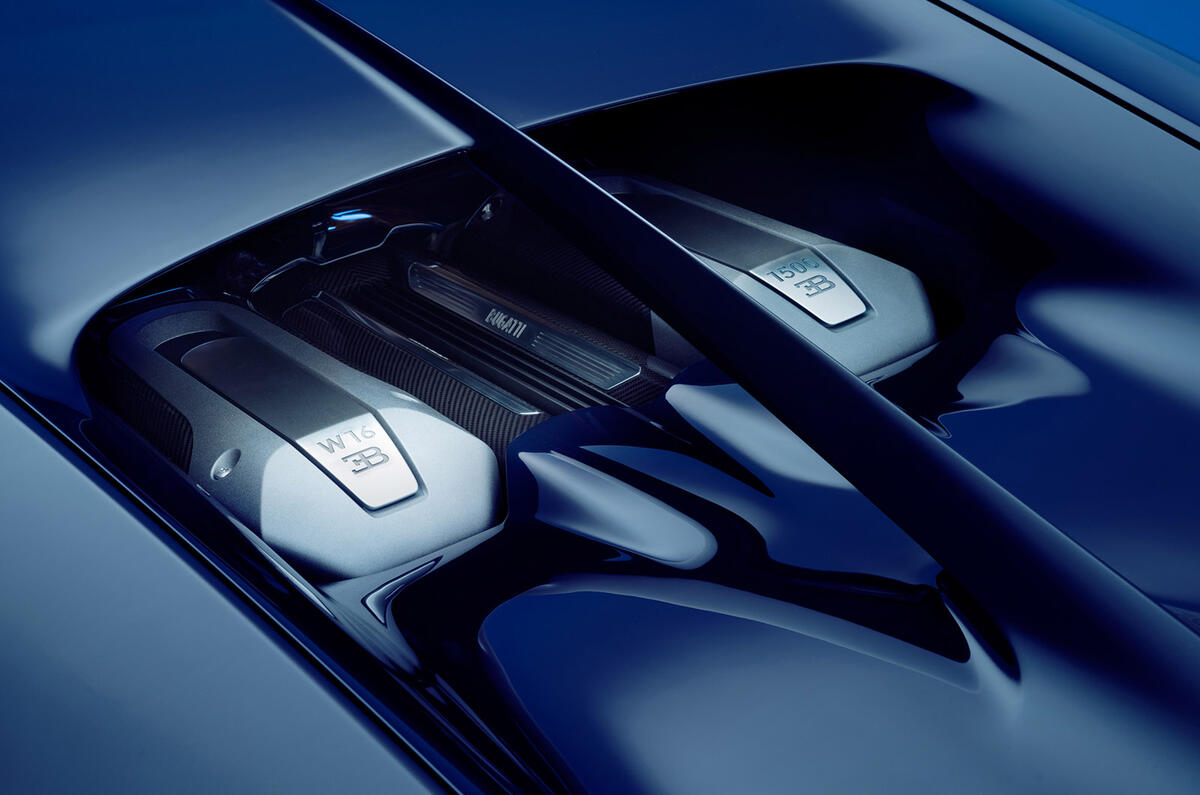The new Bugatti Chiron, the successor to the original Veyron, was revealed the Geneva motor show this week.
It has a colossal 1479bhp, can reach 62mph in less than 2.5sec - despite weighing 1995kg - and has a maximum top speed of 261mph.
Read our full review of the Bugatti Chiron
Previewed by the Vision Gran Turismo concept car at last year’s Frankfurt motor show, the immensely powerful Chiron aims to occupy the position its highly celebrated predecessor held at the very top of the supercar ladder, one rung above the McLaren P1, Ferrari LaFerrari and Porsche 918 Spyder – all of which have now ceased production.
Bugatti describes the second of its modern day models as the most powerful road car to ever reach series production. However, with volumes set to be limited to 500 and a price to match its extreme performance at an eye watering €2.4 million (about £1.9 million) it will remain out of reach for all but the seriously rich.
Bugatti boss Wolfgang Dürheimer portrays the quad-turbocharged 8.0-litre W16 powered Chiron as an all-new car that uses little from the Veyron.
But while the new Bugatti has been comprehensively re-engineered and now features a full carbonfibre construction, it adopts a similar mechanical package to its record-breaking predecessor.
At its heart is a heavily revised version of the quad-turbocharged 8.0-litre W16 configured petrol engine used by the Veyron. With a faintly absurd 1479bhp developed at 6750rpm, the mid-mounted unit delivers 492bhp more than the engine used by the Veyron – in the process providing the Chiron with a power-to-weight ratio of 741bhp per tonne. Torque has also risen by a substantial 257lb ft, peaking at 1179lb ft on a band of revs between 2000 and 6000rpm.
According to Bugatti's official figures, the Chiron achieves fuel economy of 12.5mpg on a combined cycle - that's 8.0mpg urban and 18.6mpg extra-urban. CO2 emissions stand at 516g/km. For comparison, the original Veyron emitted 586g/km CO2, and achieved 11.3mpg on a combined cycle; 6.7mpg urban and 18.1mpg extra-urban.
Among the more significant developments brought to the Bugatti powerplant is a redesigned carbonfibre inlet manifold, heavily reworked injection system featuring 32 individual injectors, larger and more powerful turbochargers, a revised intercooler system and new titanium exhaust system with a total of six catalysers that is claimed to provide a substantial reduction in back pressure over the old system.


























































































































































Join the debate
Add your comment
This is a heavily facelifted
This is a heavily facelifted
Don't compare a unique hypercar with an even rarer and engine that is the masterpiece that is known as the W16 to a poorly built and unreliable car your wife would drive! :)
Neither hot nor cool.
It was at the time a brand new Bugatti. Now it's one with the pioneering 0-400-0km/h World Record and an even more historically significant one having set the first full factory manufactured hypercar to achieve 304.773MPH. Your inability to purchase one is irrelevant. This car is HOT in 2021! :)